Here this week with a version of a bread I learned from the great baker, Mike Zakowski. This is a riff on his “Ryebatta” — a rye-fortified version of a ciabatta that he made for the 2012 Coupe du Monde de la Boulangerie competition in Paris. I’ve tweaked it slightly and, rather than doing it full size, I’m using it for bialys. The result is an open-structured, full-flavored dough that is baked with soft red onions and spices. After baking, I top them with smoked salmon (more ideas below) or just a thick smear of cream cheese and smoky chipotle honey (a flavor combo that’s literally too good to talk about).
I hope you enjoy the recipe. For me, it’s more than delicious, it’s a way of connecting with Mike’s skills and huge contribution to baking. As bakers, you and I, we’re a community. We share, we support, we cheer, and we nurture. I appreciate each of you. Let’s make these.
In many ways, this is not a bialy. With whole rye, yeasted poolish, rye sourdough and colorful toppings, we’re going from ordinary to enticing and topping it with a piñata’s worth of joy and color. While this departs from a standard bialy, I think it’s ok to shake up our baking traditions. There’s an idea I like from the Japanese culinary tradition of Kaiseki. As explained, it says we have two eyes: one for looking backwards to acknowledge tradition (and learn), and another eye to look forward at what might lie ahead. Some old, some new, and a deep respect for both.
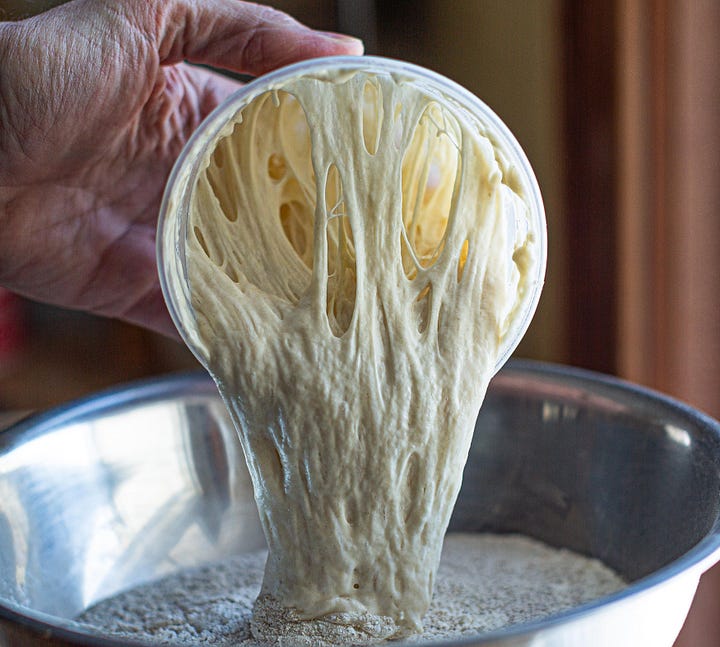
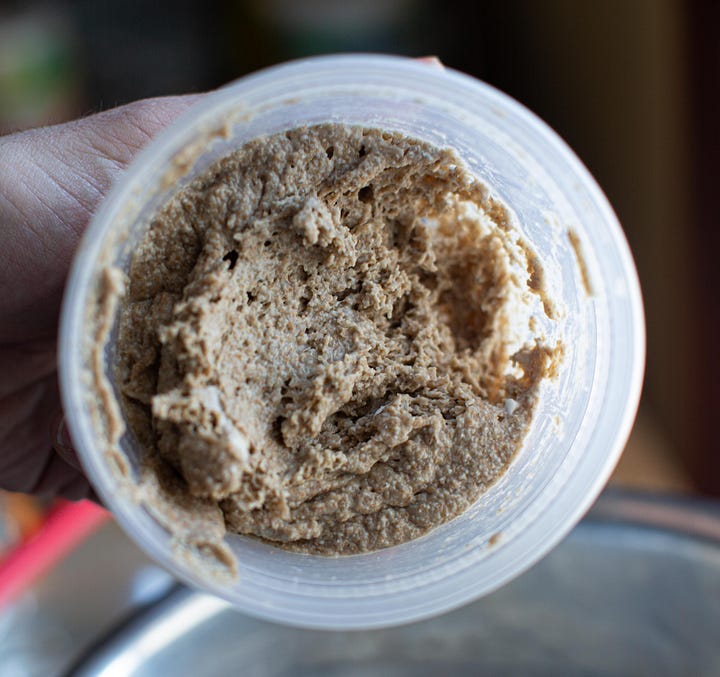
Ryebatta Bialys
Yield: 8 bialys
Poolish:
Bread flour, 57g
Water, 57g
Yeast, dry, instant, .5g (a scant ¼ t)
Rye sourdough:
Whole rye flour, 57g
Water, 46g
Sourdough culture, 15g
One day before baking, mix both preferments and set to rise for 12 to 18 hours at room temperature. At the end of that time the poolish will have small bubbles and a cobbled, crinkly surface. The rye sourdough will fill with small bubbles and rise some and feel slightly spongy but not double.
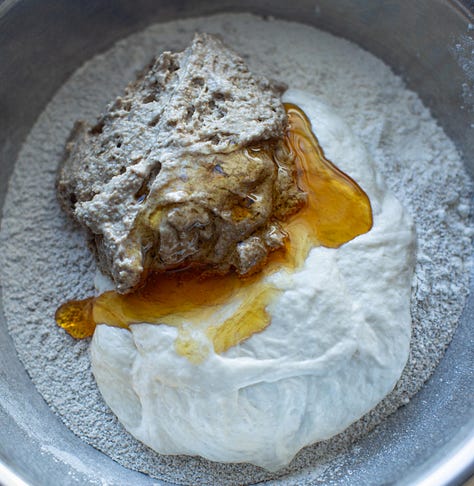

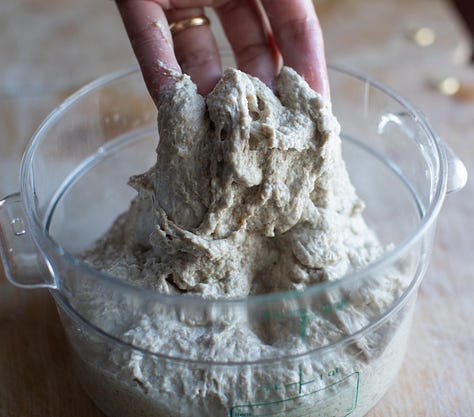
Mix:
Bread flour, 191g
Whole rye flour, 76g
Salt, fine, 10g
Yeast, dry, instant, 1.5g (1/2 t)
Water*, 203g
Honey, 10g
Rye sourdough, all
Poolish, all
*In cold months, use warm water. In my Vermont house right now my flour is usually around 62°F. In order to get a dough temperature between 75°F and 80°F I need almost 100°F water. In warm months when doughs aren’t cooling off as much during bulk due to better ambient conditions, I use a water that’s closer to room temperature. If this is at all confusing, please drop a comment or question!
In a large bowl, stir together the flours, salt, and yeast. Add the water, honey, and preferments, and stir until fully combined with no dry patches. The dough will be soft, sticky, and weak, with very little elasticity, stretchiness, or structure.
Dump the dough into an oiled 2 quart container to rise, or, leave in the bowl. (If you leave it in the bowl, be sure to scrape down the sides.) Cover with a tight lid or plastic covering. Total bulk fermentation for the dough is 90 to 120 minutes. Give a bowl fold at 15, 30, and 45 minutes. After the last fold, set the dough to rise until slightly puffy, about 45 to 75 minutes.
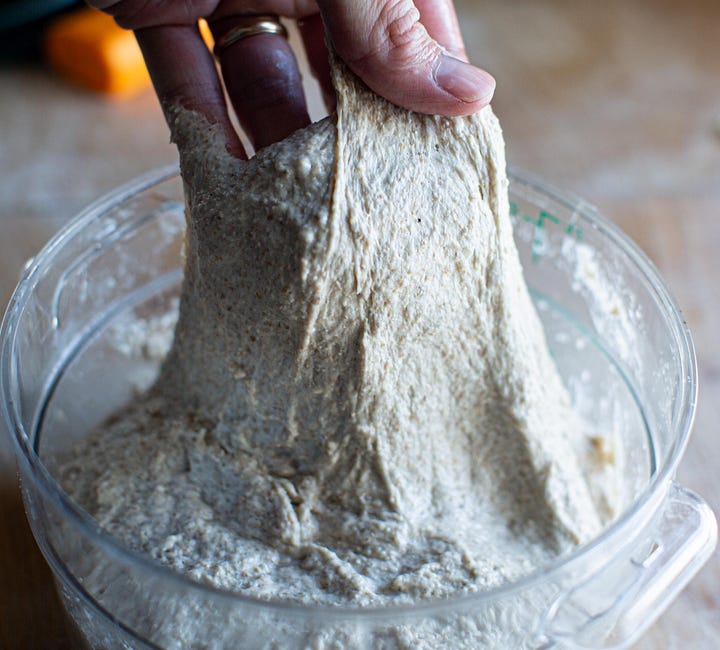
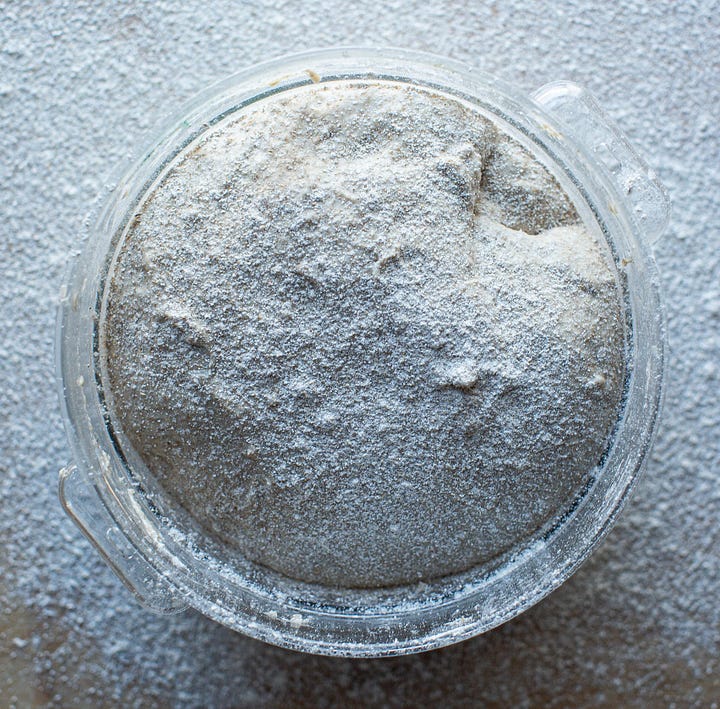
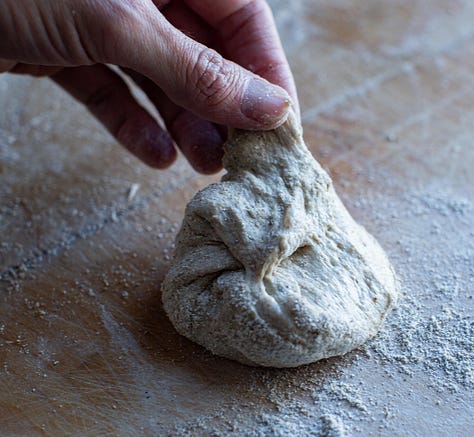
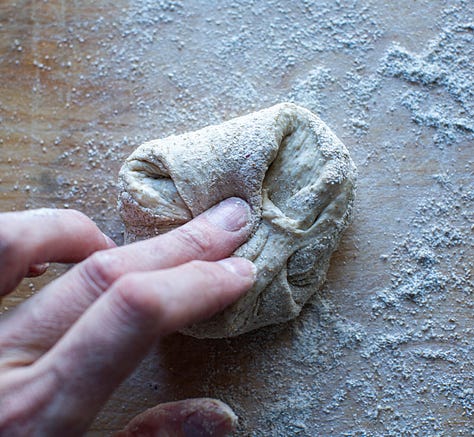
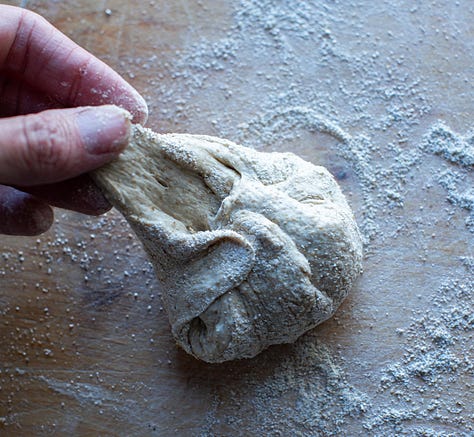
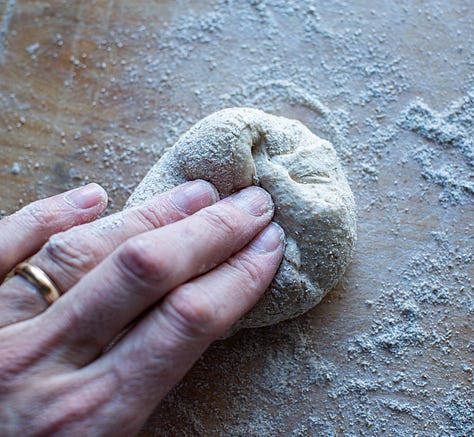
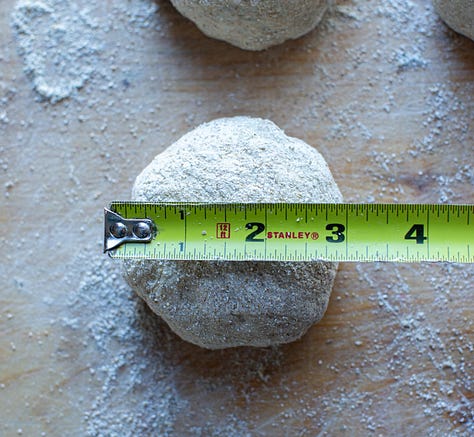
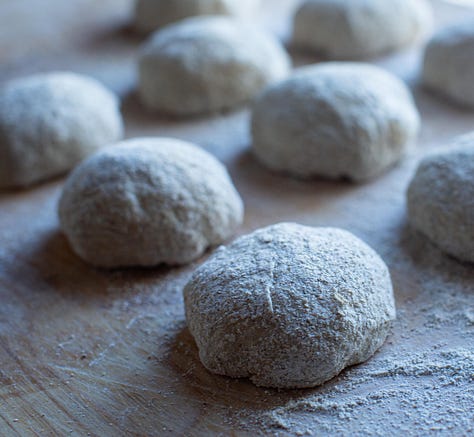
After bulk fermentation, dump the dough onto a well-floured surface (I use whole rye as the dough is a dark color). Flour the top of the dough as well and divide into eight pieces, about 90g each. Shape into loose rounds. Stretch gently from the outside and press to seal in the middle.
Place the pieces seam-side-down on a well-floured portion of the bench and cover well. (I use a kitchen towel or apron with a piece of plastic on top.) Rest the rounds until puffy and soft, about 45 to 60 minutes.
While the pieces relax, preheat the oven to 500°F with a baking stone or steel on a middle rung and a steaming system in place.
A traditional bialy filling is cooked and softened. Here, sliced red onions are steeped in boiling water. During steeping the onions sweeten and soften slightly, while still retaining their beautiful color. When adding them to the dough as a topping I season additionally — more on that in a second.
1 medium red onion, 200g
Salt, fine, 6g (1 t)
Water, boiling, 300g to 400g (enough to cover the onions completely)
Cut the onion into slices, about 1/4” thick and 2” or less in length. Don’t mince them, you want pieces that retain some shape after baking. Add to a small bowl, cover completely with boiling water, then stir in the salt. Steep the onions until you’re ready to top the dough pieces. Strain before use.
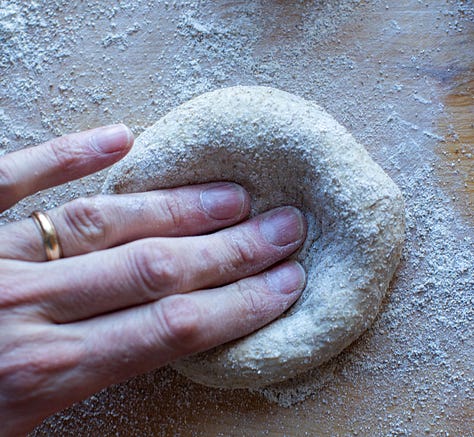
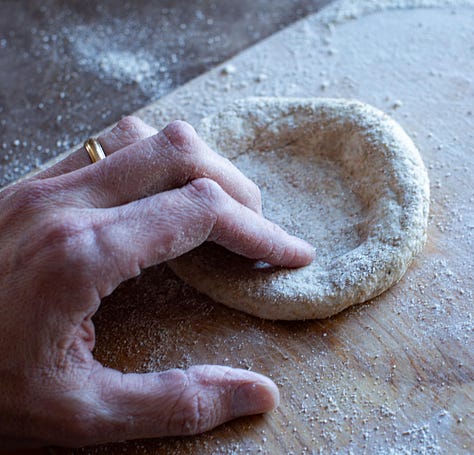
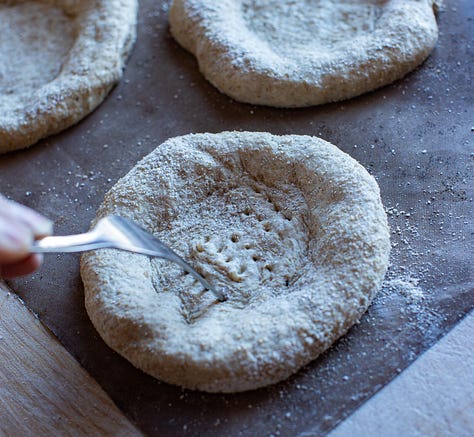
To shape the bialys, press the centers with the pads of your fingers to fully flatten, leaving a 1” border, untouched. If the dough feels sticky or wants to adhere to your fingers or work surface, invert them, reflour your surface, and continue. After stretching the dough piece should measure about 4.5” in diameter. Poke holes in the flattened portion then fill with the onions as shown below. Place the shaped pieces on parchment in a 3 — 2 — 3 pattern and proceed to topping.
Add the onions, filling the center of the dough piece. They will soften and reduce further during baking, don’t skimp. For eight pieces I’ve been using almost all of a 175g to 200g onion. But one note here, if you want to top with something else (red sauce, a piece of sausage, and a knob of good cheese) go for it. No rules.
After adding the onions, season to taste with a generous amount of coarsely ground pepper, coarse salt, caraway seeds, and a drizzle of olive oil. Don’t hold back with the spices — as we’ve shortcut the preparation of an actual filling, there is some burden here to add a punch of heat, salt, and so forth. If you’re a sesame lover or fan of Nigella or other spices, that’s great. If you want to add a smear of sour cream, mascarpone, feta, harissa, or spicy reduced tomato sauce, those are great options, too. Again, my best advice here is to be bold — the dough has some heft and depth of flavor, this is not a place to understate things.
Load the bialys into the oven, add water to the steaming system, and bake at 500°F until firm and crunchy with a color that ranges from dark brown edges to more blond centers, about 15 to 18 minutes.
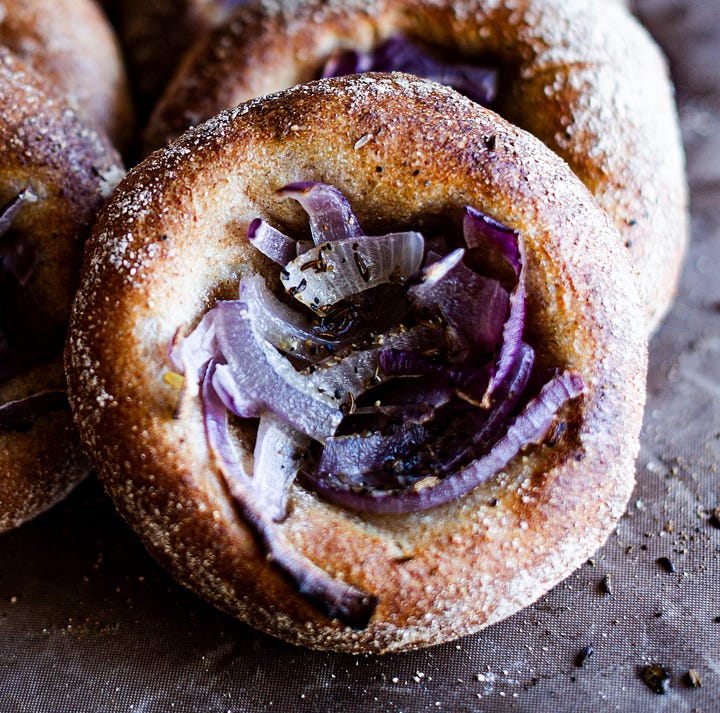

While there is a great temptation to eat these warm, the texture is better after they cool. With rye, the starches present improve (no gumminess) once fully set. On day two I retoast them slightly, and top as desired. In the picture below, I smeared them with cream cheese, then added smoked salmon, fresh dill, more red onion, and capers. But at this point, it’s your party. Make them moonwalk or dance the tango, the tradition is yours to set with both eyes.
Happy baking,
Martin

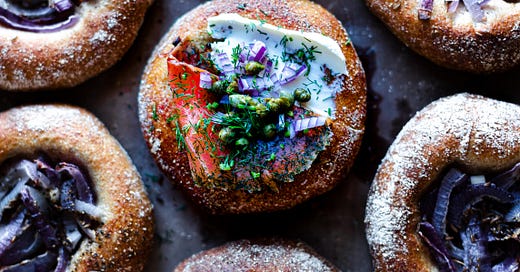


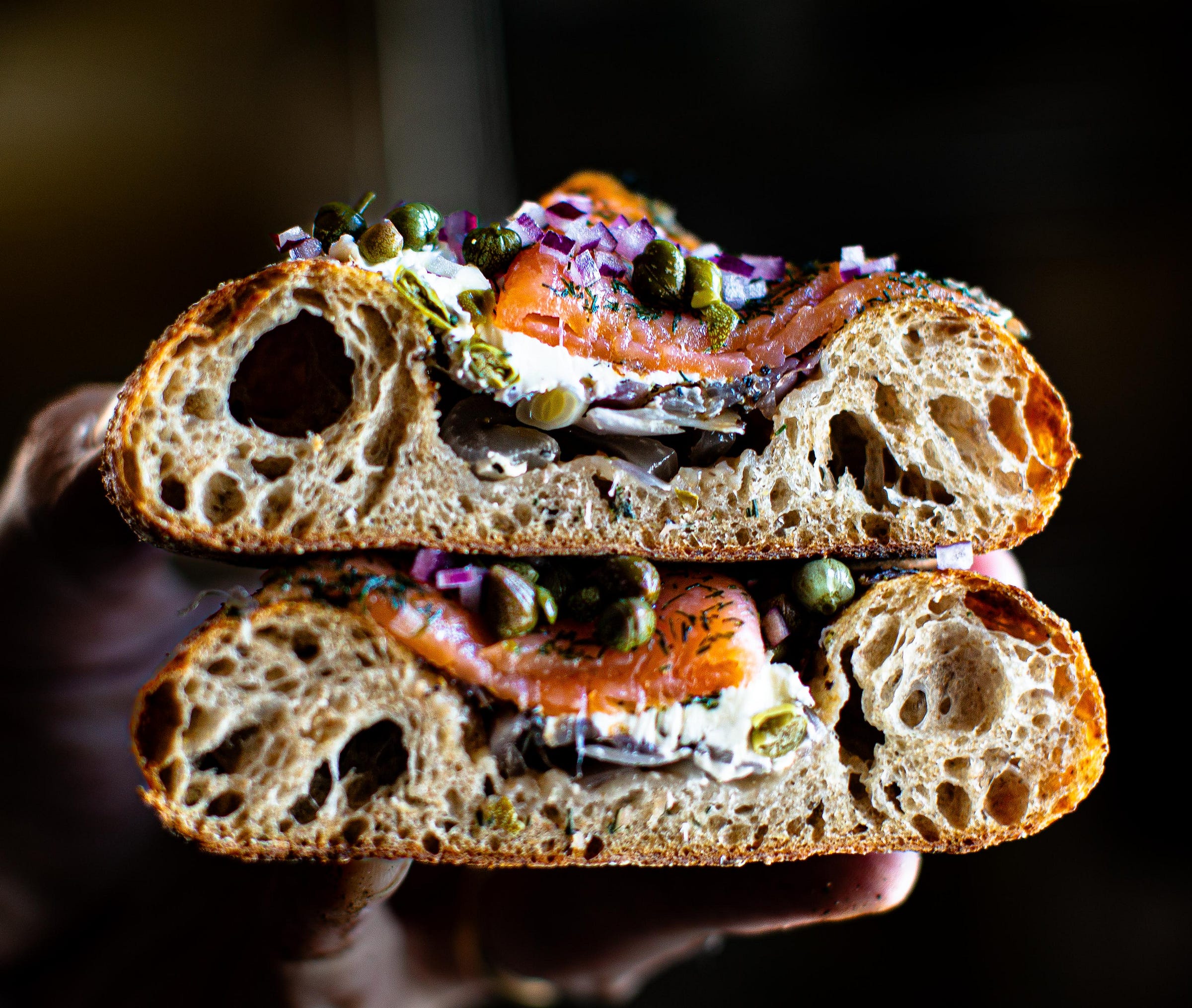
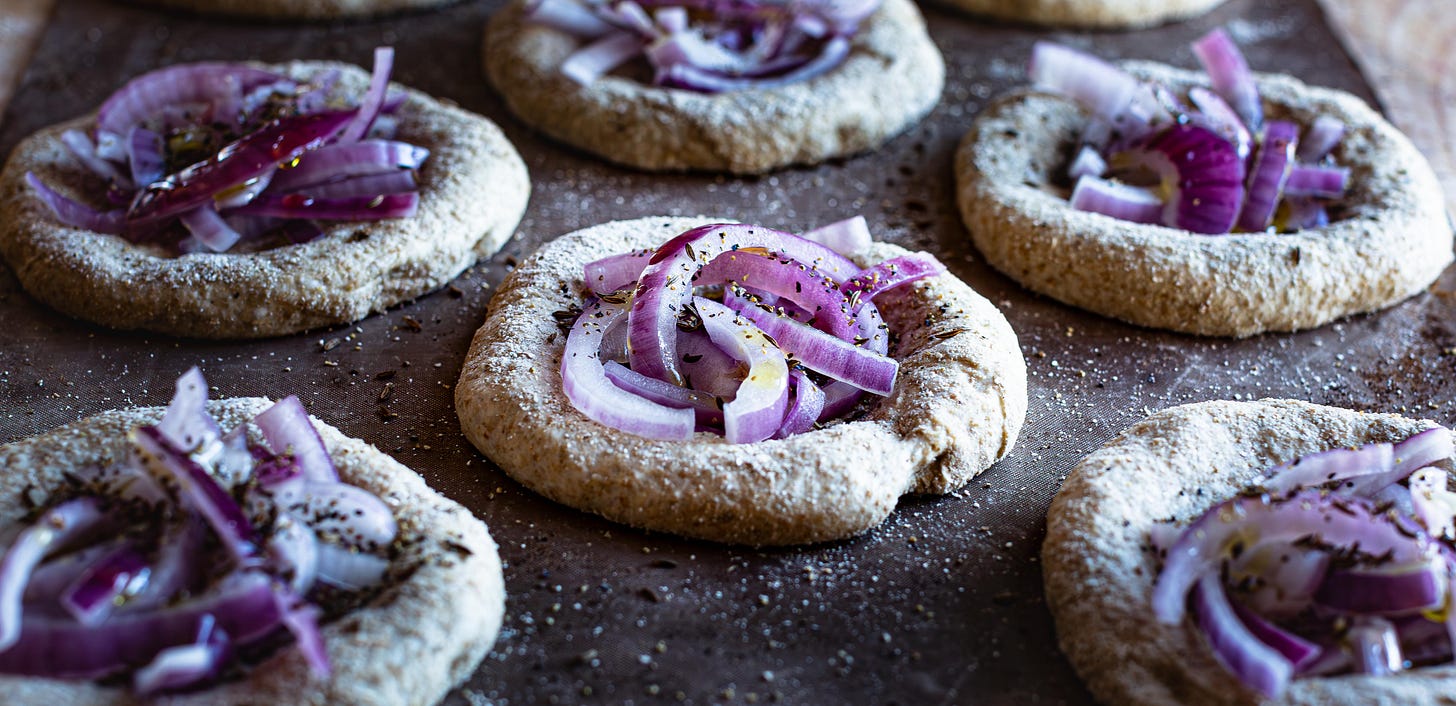
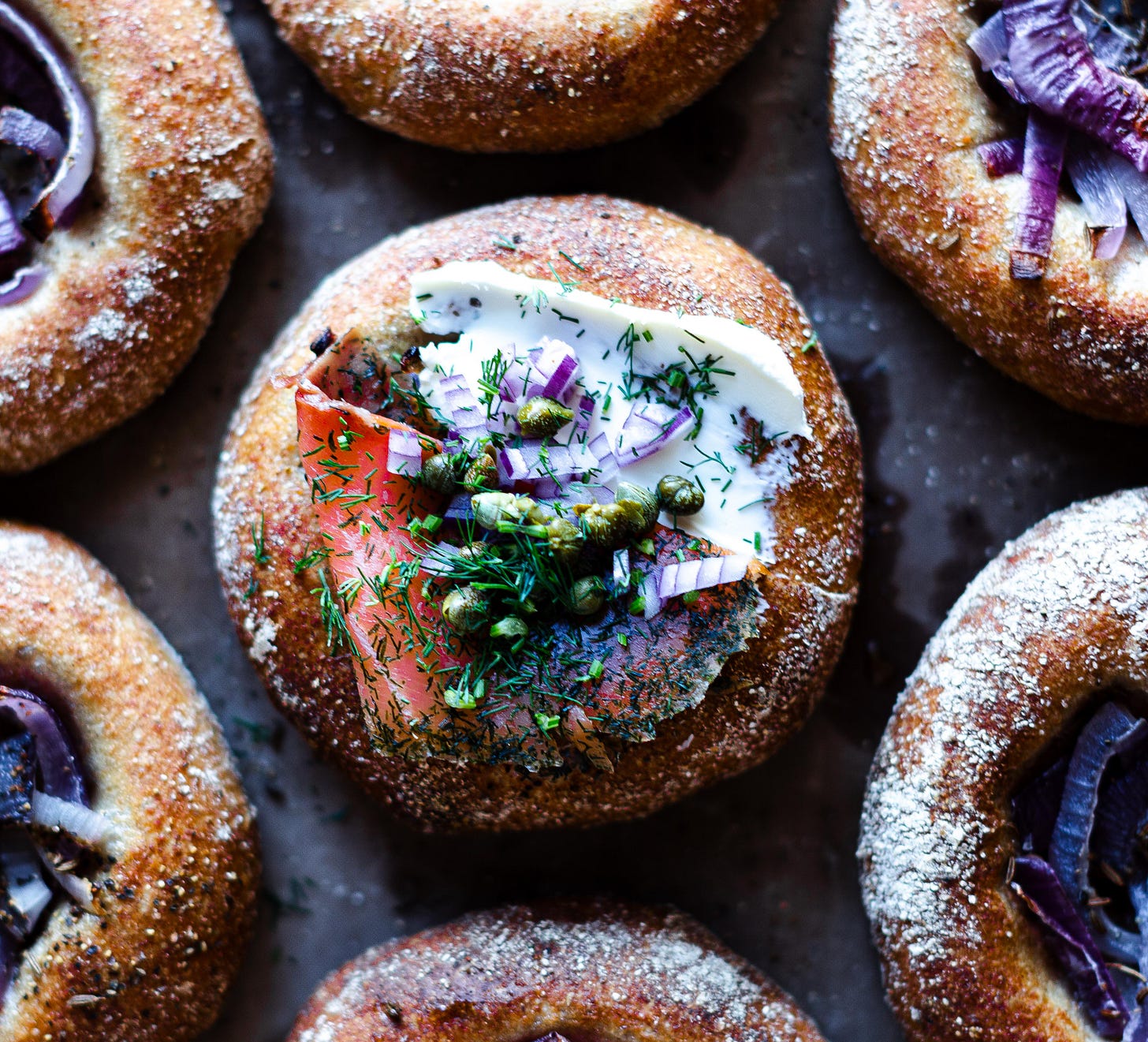
Finally got around to making these and omg such a delish savory bake. 🙌🏼🙌🏼
Hi Martin,
Thanks for another fabulous recipe and thougtful, beautifully written post.
Quick question about the potential to retard this dough. Do you think it would stand up to an overnight retard in the fridge after bulk or is this a dough that would be better remaining ambient throughout?
Many thanks,
Karen